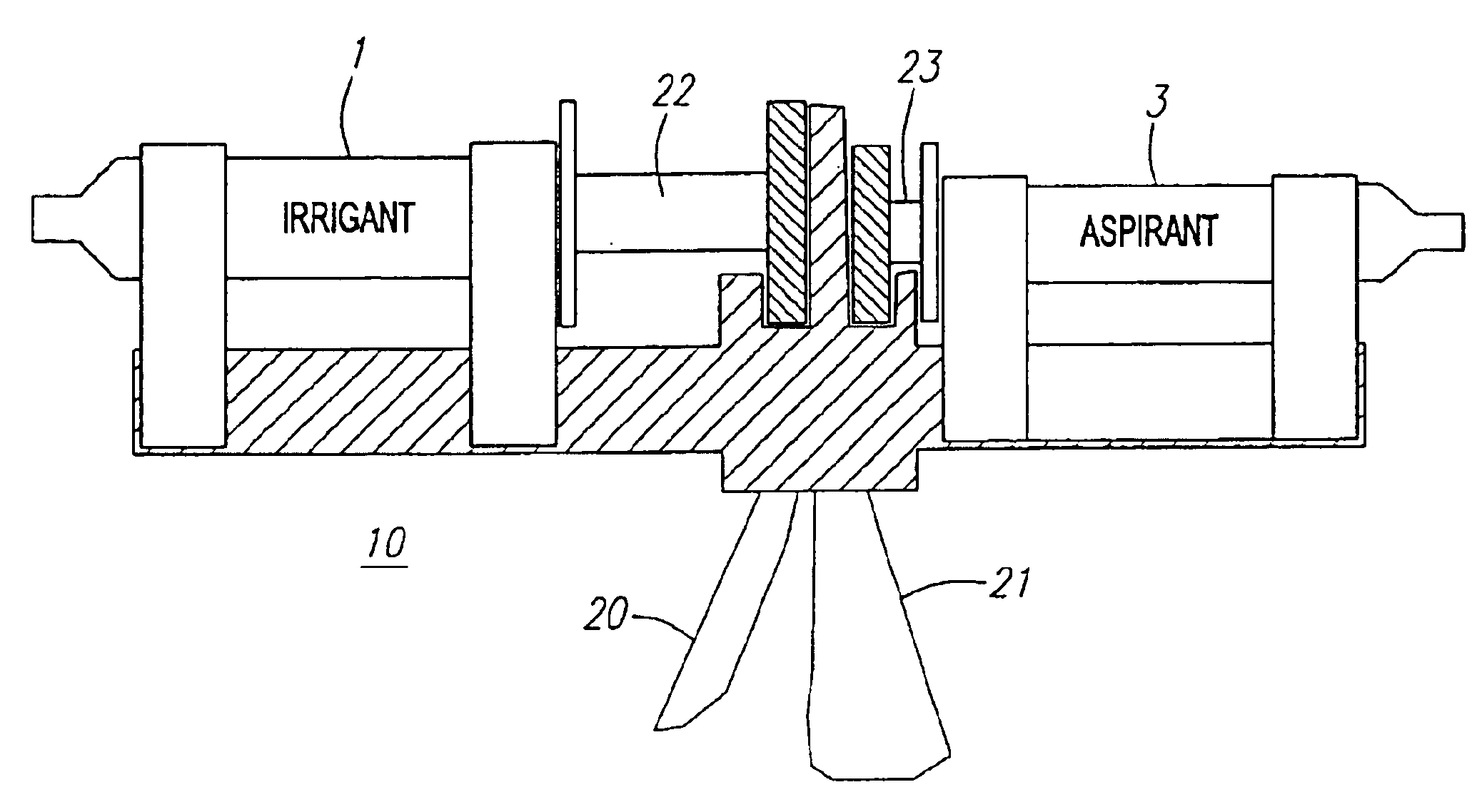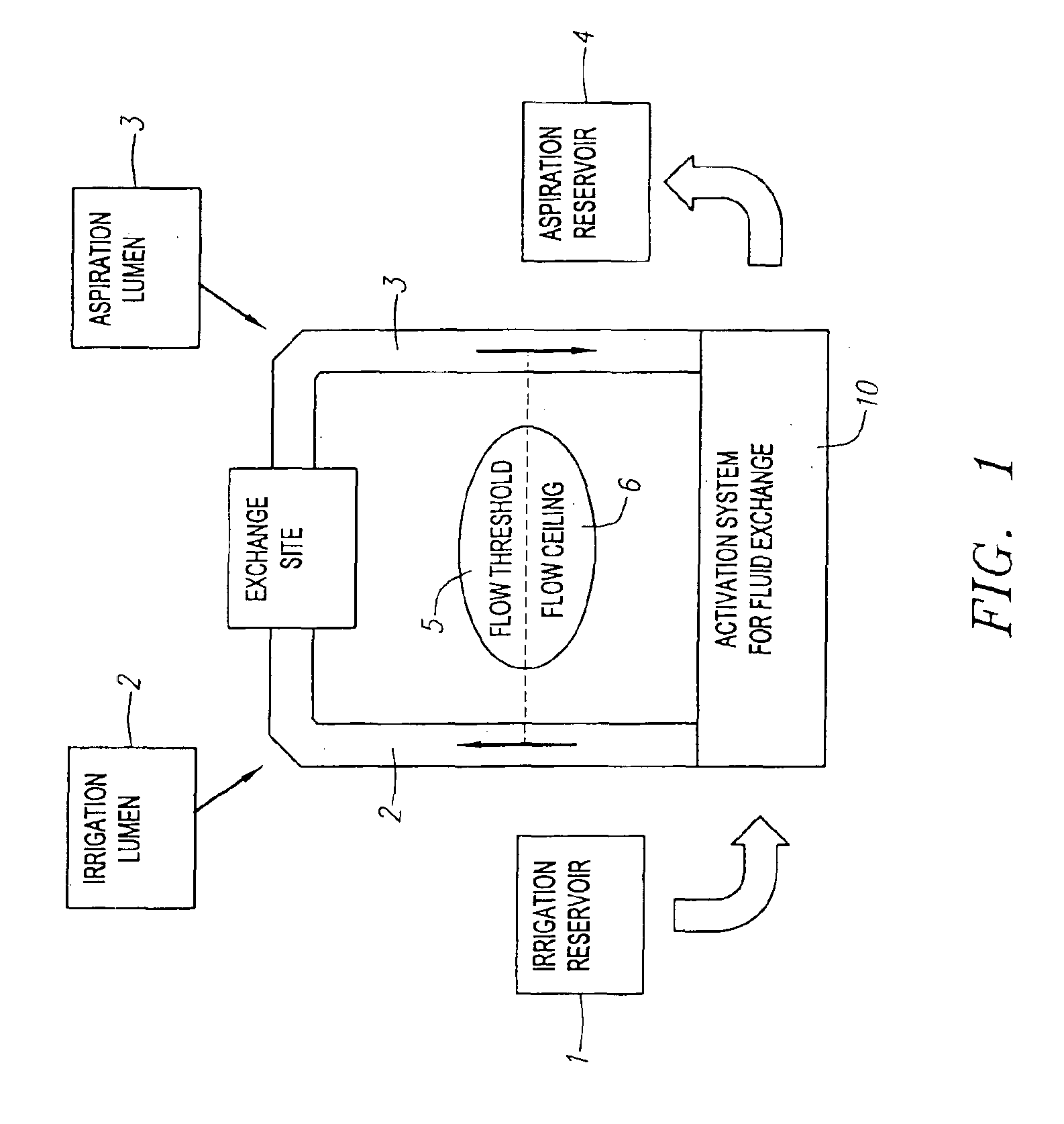Fluid exchange system for controlled and localized irrigation and aspiration
a fluid exchange system and fluid flow technology, applied in the field of controlled introduction and removal of fluids, can solve the problem that mixing cannot reach the vessel walls, and achieve the effects of enhancing the removal of embolic particles, promoting the disruption of embolic particles, and improving fluid exchange and fluid flow parameters
- Summary
- Abstract
- Description
- Claims
- Application Information
AI Technical Summary
Benefits of technology
Problems solved by technology
Method used
Image
Examples
Embodiment Construction
The present invention may be used in a number of different environments and for a variety of purposes including, but not limited to all physiological uses of peristaltic or other pump for aspiration and irrigation including, IVUS, OCT, angioplasty, endortarectomy, cardiac stent placement, vessel treatment, diagnosis and repair, surgical placement of non-cardiac stents, insertion of pig-tail catheters, ear rinsers, etc. The following detailed description is exemplary of possible embodiments of the invention.
Referring to FIG. 1, a schematic representation of the invention shows the basic components of the device necessary for implementation. The core fluid exchange or activation system maintains a substantially closed loop system with the target site for fluid exchange, e.g. the site within the body where aspiration and irrigation are applied. The irrigation component of the invention is conveniently provided by a dedicated irrigation reservoir 1, particularly when the fluid exchange ...
PUM
 Login to View More
Login to View More Abstract
Description
Claims
Application Information
 Login to View More
Login to View More - R&D
- Intellectual Property
- Life Sciences
- Materials
- Tech Scout
- Unparalleled Data Quality
- Higher Quality Content
- 60% Fewer Hallucinations
Browse by: Latest US Patents, China's latest patents, Technical Efficacy Thesaurus, Application Domain, Technology Topic, Popular Technical Reports.
© 2025 PatSnap. All rights reserved.Legal|Privacy policy|Modern Slavery Act Transparency Statement|Sitemap|About US| Contact US: help@patsnap.com



